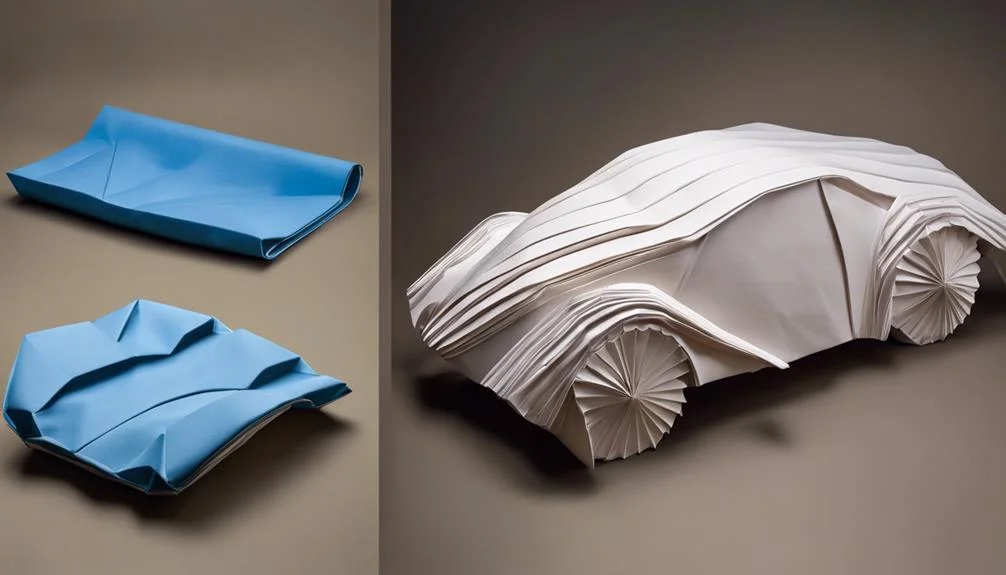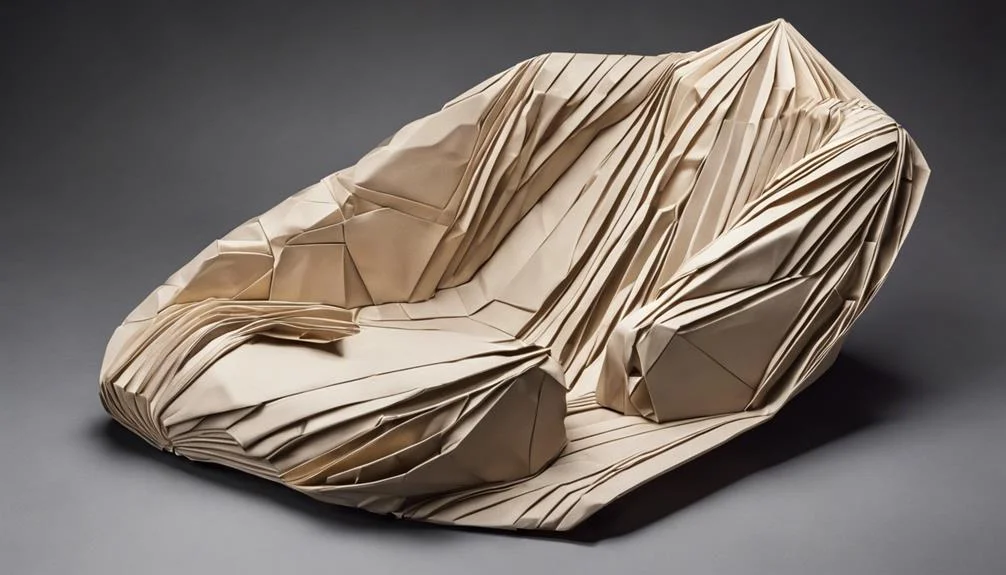The pros of neoprene car seat covers are durability, resistance to water, stains, and UV rays, ensuring longevity. Neoprene covers offer ease of maintenance, comfort, fitting, and numerous style options for customization.
The cons of neoprene car seat covers are their potential high cost, limiting accessibility for some buyers. In hotter climates, these covers can cause discomfort, detracting from their overall utility.
Takeaways:
- Neoprene seat covers offer exceptional durability, water, and stain resistance, enhancing vehicle interior longevity.
- They provide comfort and insulation, making rides cozier in colder temperatures.
- Available in various colors and customizable options, they allow for personalization of vehicle interiors.
- Despite their benefits, neoprene covers can retain heat, potentially making them less suitable for hot climates.
| Pros of Neoprene Seat Covers | Cons of Neoprene Seat Covers |
|---|---|
| Durability and Longevity | Heat Retention in Warm Weather |
| Water and Stain Resistance | Higher Cost Compared to Other Materials |
| UV Protection | Not Ideal for Heated Seats |
| Ease of Maintenance | Installation Challenges |
| All-Season Versatility | Possible Allergic Reactions |
| Comfort and Fit | Limited Breathability |
| Style and Customization | Potential for Color Transfer |
| Protection from Wear and Tear | Concealment of Original Upholstery |
| Non-Toxic and Eco-Friendly | Environmental Impact of Production |
| Noise Reduction | Sensitivity to Chemicals and Oils |
Pros of Neoprene Seat Covers
- Durability and Longevity: Neoprene seat covers are incredibly durable, capable of withstanding considerable wear and tear without showing signs of damage. Their resilience extends the lifespan of car seats by protecting them from spills, dirt, and the usual deterioration associated with regular use. This material is specifically engineered to resist stretching, shrinking, and other forms of physical distortion, ensuring that the seat covers maintain their shape and functionality over time.
- Water and Stain Resistance: One of the standout qualities of neoprene is its innate ability to repel water and resist stains. This characteristic is particularly beneficial for vehicle owners who frequently encounter mud, rain, or spills. The waterproof nature of neoprene means that liquids do not seep through to the actual car seat, thereby preventing moisture-induced damage and facilitating easier clean-up.
- UV Protection: Neoprene seat covers offer excellent protection against the harmful effects of ultraviolet (UV) rays. Continuous exposure to sunlight can cause car seats to fade and deteriorate prematurely, but neoprene’s UV-resistant properties help preserve the color and integrity of the seat material. This is especially important for vehicles that are regularly parked in open areas without shade.
- Ease of Maintenance: The ease with which neoprene seat covers can be cleaned is a significant advantage. Unlike some materials that require special cleaning solutions or techniques, neoprene can be easily wiped down with a damp cloth, making them ideal for families, pet owners, and outdoor enthusiasts who don’t want to spend excessive time on seat maintenance.
- All-Season Versatility: Neoprene’s insulating properties make it a versatile choice for all weather conditions. In colder climates, it can provide additional warmth, while its ability to repel heat in sunny weather helps keep the seats comfortable during hot months. This adaptability enhances the overall driving experience throughout the year.
- Comfort and Fit: Thanks to the flexibility of neoprene, seat covers made from this material are known for their snug and comfortable fit. They conform closely to the shape of the seats, preventing slippage and bunching, which can detract from driving comfort. The cushioning effect of neoprene also adds an extra layer of softness, enhancing seat comfort.
- Style and Customization: The availability of neoprene seat covers in various colors and designs allows for extensive customization of a vehicle’s interior. Owners can choose from a wide range of options to match their personal style or to complement the existing interior decor, making it easy to give their car a unique and attractive look.
- Protection from Wear and Tear: Neoprene seat covers act as a protective barrier against the everyday wear and tear that can diminish the appearance and value of a vehicle’s interior. By safeguarding the original upholstery from damage, these covers help maintain the car’s resale value and keep it looking new for longer.
- Non-Toxic and Eco-Friendly: Neoprene is a non-toxic material, making it safe for use in vehicles, even in close contact with skin. Additionally, the durability and long life of neoprene seat covers contribute to less frequent replacements, which is beneficial from an environmental sustainability perspective.
- Noise Reduction: The cushioning properties of neoprene can also help dampen noise within the vehicle cabin. By absorbing vibrations and sound, neoprene seat covers can contribute to a quieter, more pleasant driving experience, especially on long journeys.
Cons of Neoprene Seat Covers
- Heat Retention in Warm Weather: Despite their many benefits, neoprene seat covers can retain heat, making them less comfortable in hot weather. This can result in a warmer seating surface, which may be uncomfortable for drivers and passengers during summer months or in climates that are warm year-round.
- Higher Cost Compared to Other Materials: Neoprene seat covers are generally more expensive than those made from other materials. This higher cost can be a deterrent for buyers on a tight budget, despite the long-term benefits of durability and protection that neoprene offers.
- Not Ideal for Heated Seats: Vehicles equipped with heated seats may not benefit fully from this feature when using neoprene seat covers. The insulating properties of neoprene can hinder the transfer of heat, reducing the effectiveness of the seat heating mechanism and potentially altering the expected comfort level.
- Installation Challenges: Fitting neoprene seat covers onto the seats can sometimes be challenging, particularly for those who are not accustomed to installing seat covers. The tight fit, while beneficial for appearance and comfort, can require more effort and time to install correctly compared to more loosely fitting materials.
- Possible Allergic Reactions: Although rare, some individuals may experience allergic reactions to neoprene. Those with sensitive skin or allergies to synthetic materials should consider this potential con before choosing neoprene seat covers for their vehicle.
- Limited Breathability: Neoprene’s waterproof nature means it is not as breathable as some other seat cover materials. This can lead to a less comfortable seating experience, especially on longer drives, as air circulation is restricted, and moisture from perspiration may not evaporate as readily.
- Potential for Color Transfer: On lighter-colored upholstery, there is a risk that the dyes used in neoprene seat covers could transfer, particularly when the seats become wet. This can lead to staining of the original seat material, which may be difficult to remove.
- Concealment of Original Upholstery: For vehicle owners who take pride in the appearance of their car’s original upholstery, neoprene seat covers may be seen as a disadvantage because they cover up the original seat material. This is particularly relevant for luxury vehicles where the upholstery is a significant part of the vehicle’s aesthetic appeal.
- Environmental Impact of Production: While neoprene is durable and non-toxic, the production of synthetic rubber can have environmental impacts. Those concerned with the ecological footprint of their purchases may wish to consider the production process and materials used in neoprene seat covers.
- Sensitivity to Chemicals and Oils: Neoprene can be sensitive to certain chemicals and oils, which can cause degradation of the material over time. This requires users to be cautious about the products they use to clean or maintain their seat covers, to avoid damaging the neoprene.
Durability and Longevity
One of the standout qualities of neoprene seat covers, exemplified by brands like Wet Okole and Trek Armor, is their remarkable durability and extended lifespan. These covers are constructed from a synthetic rubber that offers exceptional resilience against wear and tear, making them an ideal choice for vehicle owners who prioritize long-lasting protection for their seats.
The inclusion of a UV protectant in the material composition of neoprene seat covers further enhances their durability by preventing the color from fading due to prolonged exposure to sunlight. This feature is particularly beneficial for vehicles frequently parked outdoors, where the sun’s rays can have a detrimental effect on interior fabrics.
Moreover, the washable nature of neoprene seat covers simplifies the maintenance process, allowing for easy cleanup of spills and stains, thus preserving the covers’ appearance and functionality over time. Trek Armor takes this promise of longevity a step further by offering a 3-year warranty against fading, showcasing their confidence in the durability of their products.
While Smittybilts presents a more affordable option, they may not offer the same level of fade resistance, highlighting the importance of investing in quality for prolonged use and satisfaction.
Water and Stain Resistance

Building on their durability, neoprene seat covers also excel in water and stain resistance, offering superior protection against spills and moisture. This feature is particularly beneficial for maintaining the interior aesthetics and functionality of vehicles. Neoprene, a synthetic rubber material, is designed to repel liquids, thereby preventing moisture from seeping into the original seats. This water resistance is invaluable for vehicles frequently exposed to wet conditions, such as outdoor or open-roof cars, where seats are more susceptible to rain and spills.
The material’s high stain resistance further enhances the appeal of neoprene seat covers. It facilitates easy cleaning and maintenance, allowing for quick wipe-downs that efficiently manage spills without leaving behind lasting marks or damage. This ease of care ensures that the car’s interior remains in pristine condition over time, contributing to both the vehicle’s aesthetic appeal and its resale value.
Moreover, neoprene’s ability to quickly dry and not retain moisture makes it an excellent choice for vehicles used in outdoor adventures or those without a permanent roof. This ensures that seats remain dry, clean, and comfortable for passengers, irrespective of the weather conditions or accidental spills.
Comfort and Insulation
Neoprene seat covers’ insulation qualities not only enhance passenger comfort but also play a crucial role in temperature regulation within the vehicle’s interior. These covers are designed to offer a layer of insulation, keeping seats warmer during the colder months, thereby contributing to an overall more comfortable driving experience. In cold weather conditions, despite an initially cool touch, neoprene seat covers gradually adapt to the passenger’s body temperature, providing a cozy and snug feel.
However, due to the material composition of neoprene, these seat covers can retain heat, making them feel hot during summer months. This characteristic may necessitate additional ventilation methods to ensure comfort in warmer weather. Despite this, the cushioning effect of neoprene covers significantly enhances the seating experience. The material’s soft, supportive nature ensures that passengers enjoy a comfortable ride, even during long drives.
Moreover, the insulation properties of neoprene contribute to maintaining a consistent temperature on the seats. This aspect of neoprene seat covers is particularly beneficial for ensuring passenger comfort across varying climatic conditions, making them a versatile choice for vehicle owners.
Variety and Customization

Turning our attention to the aspect of variety and customization, neoprene seat covers excel in providing a wide selection of colors and tailored fit options. This versatility not only enhances the aesthetic appeal of a vehicle’s interior but also allows for a highly personalized touch that reflects the owner’s taste and style preferences.
Moreover, the availability of diverse designs and the ability to customize features such as embroidery, enable users to achieve a unique and custom look that stands out.
Wide Color Selection
A vast array of color options, including both vibrant and subtle hues, makes neoprene seat covers a popular choice for those seeking to customize their vehicle’s interior. The selection encompasses non-traditional colors like pink and green, as well as camo patterns, allowing individuals to tailor their space to match specific tastes or the existing decor of their vehicle.
This variety facilitates not just aesthetic enhancement but also personal expression, letting owners infuse their cars with a touch of their personality. Whether aiming for a bold statement with a splash of color or preferring an understated elegance with more classic tones, the comprehensive color palette of neoprene seat covers meets a wide range of preferences, ensuring every driver can find the perfect match for their style and vehicle interior.
Tailored Fit Options
Building on the aesthetic flexibility offered by their wide color selection, neoprene seat covers also stand out for their tailored fit options, catering to various vehicle models and personal preferences. This customization extends beyond mere aesthetics, offering practical benefits that enhance the vehicle’s interior.
The precision of these fitted covers ensures a seamless integration with the existing upholstery, elevating the overall look and feel.
- Precise Fit: Ensures a snug and sleek look, enhancing the vehicle’s interior aesthetics.
- Variety of Options: Available for bucket seats, bench seats, and seats with integrated seat belts, catering to a wide range of vehicles.
- Customization Choices: Colors, patterns, and styles can be tailored to match individual preferences, allowing for a personalized touch.
Heat Retention Issues

One significant drawback of neoprene seat covers is their tendency to retain heat, especially during the summer months, making them less comfortable for individuals in warmer climates. The insulating properties of neoprene, while beneficial in maintaining a constant temperature under certain conditions, can result in an increase in seat temperature when exposed to direct sunlight or high ambient temperatures. This heat retention can lead to discomfort for some users, particularly those who are sensitive to heat or who reside in areas where the climate is predominantly warm.
The thickness of the neoprene material is a contributing factor to its heat retention characteristics. While this thickness is instrumental in providing cushioning and protection against spills and wear, it also acts as an insulator, trapping heat close to the seat surface. Consequently, individuals who prefer cooler seating options during hot weather may find neoprene covers less than ideal.
As a result, some users may opt for alternative seat cover materials, such as leather or synthetic leather, which can offer better heat regulation. These materials, while possibly not as protective against spills as neoprene, can provide a more comfortable seating experience in environments where temperatures are a concern.
Maintenance Requirements

Maintaining neoprene seat covers involves straightforward procedures that ensure their longevity and sustained performance. These seat covers, celebrated for their durability, require minimal effort to keep them looking and functioning at their best. Regular care not only preserves the appearance of the covers but also protects your vehicle’s seats from wear and tear, spills, and stains.
To ensure optimal maintenance of neoprene seat covers, consider the following guidelines:
- Quick Cleaning with a Wipe: For everyday dust and minor spills, a simple wipe down with a damp cloth can keep your seat covers looking fresh. This easy step can be done as often as needed, making it convenient for busy individuals.
- Avoid Harsh Chemicals: When conducting a more thorough clean, it’s crucial to avoid harsh cleaning agents. These chemicals can degrade the neoprene material, leading to premature wear and potential damage.
- Proper Storage: If you decide to remove the seat covers, storing them properly is key to preventing damage. A cool, dry place away from direct sunlight is ideal to maintain the integrity of the material.
Adhering to these maintenance tips can significantly extend the life of neoprene seat covers, ensuring they continue to protect your vehicle’s seats while maintaining their aesthetic appeal.
Cost Comparison
Moving on to the cost comparison of neoprene seat covers, it’s crucial to examine both the initial price range and the long-term value they offer. Given their affordability relative to leather options and the durability they provide, neoprene seat covers represent a cost-effective choice for vehicle owners.
This section will analyze the factors contributing to their economic advantage, ensuring a comprehensive understanding of their financial benefits.
Price Range Overview
Neoprene seat covers offer a versatile and budget-friendly alternative to leather, with prices typically ranging from $100 to $300. This price range makes neoprene an accessible option for a broad spectrum of car owners who seek both quality and affordability in seat protection. The cost varies based on several factors, including customization and additional features.
- Custom-fit options: Tailored for specific vehicle models, custom-fit covers may range from $200 to $500, reflecting the premium for personalization.
- Higher-end features: Some neoprene covers include enhancements like extra padding or built-in storage, pushing the price over $300.
- Entry-level affordability: Starting at around $100, entry-level neoprene covers provide essential protection and durability, catering to budget-conscious consumers.
Long-Term Value Analysis
Evaluating the long-term value of neoprene seat covers involves a cost comparison that highlights their durability and quality as key factors in their overall worth. These seat covers offer exceptional longevity, resist fading, and maintain their quality over time, making them a favorable investment despite their initial higher cost.
While there are cheaper options available, they often fall short in terms of quality and durability, leading to a compromise in long-term value. Premium brands like Wet Okole are renowned for providing a perfect fit and enduring quality, further ensuring the covers’ longevity.
Alternatively, Coverking presents a more cost-effective solution without significantly sacrificing quality, especially when leveraging available coupon codes. This strategic approach enhances the long-term value proposition of neoprene seat covers, solidifying their status as a worthwhile investment.
Conclusion
In summary, neoprene seat covers present a mixed bag of benefits and drawbacks. Their durability and resistance to water and stains make them an appealing choice for protecting vehicle interiors. While they offer a level of comfort and insulation, their tendency to retain heat and limited aesthetic options may deter some users.
Despite these issues, the simplicity of maintenance and the overall longevity they provide can offer significant value. Ultimately, the decision to use neoprene seat covers should be informed by weighing these factors against personal preferences and requirements.












